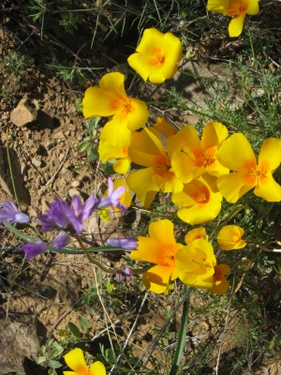 Tucson is one of the largest cities in the United States that obtains the majority of its municipal water from its aquifer, or ground water. Although ground water is often classified as a renewable resource, Tucsonans have been pumping water out of the Tucson Basin Aquifer more quickly than it can regenerate. As we pump, the water table drops, causing desertification and the disappearance of flowing washes and riparian areas. This desertification creates challenges for the native flora and fauna of our region, and often increases the ability of non-native species to invade. As soils dry out, they also become less stable, leading to greater erosion and loss of mature soil structures which provide the foundation of the Sonoran Desert ecosystem.
Now that we are realizing the negative effect that pumping groundwater has on our environment, what alternative sources can we turn to? The City of Tucson has increased its use of reclaimed water in landscaping and other non-potable uses. The city has also been increasing the amount of Colorado River water, or CAP water, in its tap water blend. The Colorado River, however, like ground water, is not able to regenerate fast enough to keep up with our demand.
Tucson is one of the largest cities in the United States that obtains the majority of its municipal water from its aquifer, or ground water. Although ground water is often classified as a renewable resource, Tucsonans have been pumping water out of the Tucson Basin Aquifer more quickly than it can regenerate. As we pump, the water table drops, causing desertification and the disappearance of flowing washes and riparian areas. This desertification creates challenges for the native flora and fauna of our region, and often increases the ability of non-native species to invade. As soils dry out, they also become less stable, leading to greater erosion and loss of mature soil structures which provide the foundation of the Sonoran Desert ecosystem.
Now that we are realizing the negative effect that pumping groundwater has on our environment, what alternative sources can we turn to? The City of Tucson has increased its use of reclaimed water in landscaping and other non-potable uses. The city has also been increasing the amount of Colorado River water, or CAP water, in its tap water blend. The Colorado River, however, like ground water, is not able to regenerate fast enough to keep up with our demand.
Conservation is always the first step. Simple actions like taking shorter showers and fixing leaks in toilets, faucets, or irrigation systems have a significant impact. As one ½ gallon of water is used in every KwH of electricity produced, simple energy conservation measures also conserve our region’s water. Although it may not be obvious, you are conserving water every time you use an energy-efficient appliance, choose locally-made products, or turn off the light when you leave a room.
Rainwater harvesting has been practiced for thousands of years across the world. In this area, O’odham and Hopi people traditionally planted their crops just prior to summer and winter rainy seasons, and sloped their farmland to make the most efficient use of every drop of rain.
Today, we are remembering the value of these methods. In 2005, a study from the University of Arizona concluded that if Tucsonans were to harvest rainwater from all available roof areas in the city, we could meet our current water demand on rainwater alone. These findings emphasize the potential for rainwater to become a major water source for our region in the future.
